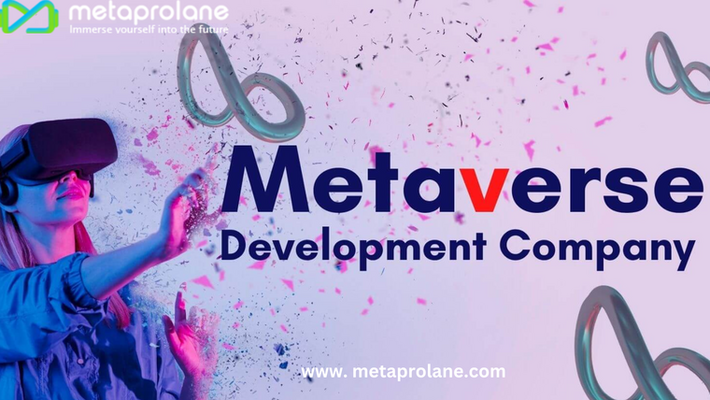- 1-905-452-8193
- Contact Us
- Member Login
- Get Listed Today
- 220,911 members

In the ever-evolving landscape of technology, a new frontier is emerging—a virtual realm known as the Metaverse. Metaverse promises to revolutionize the way we interact, work, play, and create in a digital space. From immersive gaming and social interactions to virtual commerce and educational opportunities, the Metaverse holds the potential to reshape our understanding of reality itself. In this article, we delve into the fascinating realm of Metaverse development. We explore the Technical stack underlying Metaverse and how to develop your own Metaverse for your business.
Scope of Metaverse Development in 2023
The Metaverse can be defined as a collective virtual shared space, created by the convergence of physical and virtual reality, where users can interact with each other and digital objects in real-time. The scope of Metaverse development in 2023 is poised for significant growth and innovation. With tech giants and startups investing heavily in Metaverse-related technologies, we can expect advancements in areas such as virtual reality (VR), augmented reality (AR), blockchain, and artificial intelligence (AI). In the gaming industry, the Metaverse will continue to evolve, offering more immersive gaming experiences that blend real-world and virtual elements.
We can anticipate increased integration of NFTs, allowing for unique ownership and monetization of virtual assets. Furthermore, the Metaverse will expand beyond gaming, with applications in social networking, virtual commerce, education, and remote work collaboration. The scope of Metaverse development in 2023 holds immense potential to shape the future of digital experiences and redefine our interactions with the virtual realm.
Technical stack underlying in Metaverse
The concept of the Metaverse is still evolving, and there isn't a specific technical stack that universally defines it. However, several technologies and components are commonly associated with Metaverse Development. Here are some of the key elements that form the technical stack underlying the Metaverse:
Virtual Reality (VR)
Augmented Reality (AR)
Blockchain technology
3D Modeling and Animation
Artificial Intelligence (AI)
Cloud Computing
Internet of Things (IoT)
Edge Computing
Web 3.0
Mixed Reality (MR)
These technologies enable immersive experiences, realistic visuals, spatial awareness, digital asset ownership, scalability, physical-world integration, intelligent virtual characters, and seamless communication between users and platforms.
How to develop your own Metaverse for your business?
Developing your own Metaverse for your business requires careful planning, technical expertise, and a deep understanding of your business objectives. Here are some steps to consider when embarking on the journey of Metaverse Development for your business:
Define Your Goals: Clearly articulate your business goals and how the Metaverse can help you achieve them. Identify the specific areas of your business that can benefit from a virtual environment, such as virtual showrooms, immersive customer experiences, or virtual team collaboration.
Conduct Research: Familiarize yourself with existing Metaverse platforms, technologies, and development tools. Explore different options, considering factors such as scalability, customization capabilities, user experience, and interoperability.
Assemble a Team: Build a team with the necessary skills and expertise in areas such as virtual reality, game development, blockchain, AI, and user experience design. Collaborate with professionals who can help you navigate the technical complexities of building a Metaverse.
Design and Architecture: Create a blueprint for your Metaverse, including the virtual environments, avatars, interactive elements, and integration points with your existing systems. Consider the aesthetics, functionality, and user flow to ensure a seamless and engaging experience.
Development and Integration: Implement the technical aspects of your Metaverse, leveraging appropriate development tools, programming languages, and platforms. Integrate features such as virtual reality, augmented reality, social networking, and transaction capabilities based on your business needs.
Content Creation and Curation: Populate your Metaverse with relevant and engaging content. This may include 3D models, virtual assets, interactive elements, and curated experiences. Consider user-generated content to foster community engagement and creativity.
Testing and Iteration: Conduct rigorous testing to ensure the stability, performance, and user-friendliness of your Metaverse. Gather feedback from users and iterate on your design and functionality to improve the overall experience.
Launch and Promotion: Once your Metaverse is ready, launch it to your target audience. Develop a marketing strategy to promote your virtual space, attract users, and drive engagement. Consider partnerships, events, and collaborations to generate buzz and increase visibility.
User Support and Engagement: Provide ongoing support to users, addressing their queries and concerns. Foster a vibrant and interactive community within your Metaverse, encouraging collaboration, feedback, and user-generated content.
Why Metaprolane for Metaverse development?
Metaprolane is a leadingMetaverse development company that offers comprehensive Metaverse developmentservices and solutions. The company stands out in the industry due to its expertise, innovation, and customer-centric approach. Metaprolane understands the unique requirements of Metaverse development and possesses the necessary skills and experience to bring virtual worlds to life. They offer a wide range of Metaverse Development Solutions, including virtual reality (VR) platforms, augmented reality (AR) applications, and blockchain integration, providing businesses with the tools and expertise needed to create immersive and interactive Metaverse experiences. Their comprehensive approach to Metaverse development solutions ensures that clients can harness the full potential of the Metaverse and unlock new opportunities for engagement, collaboration, and growth.
